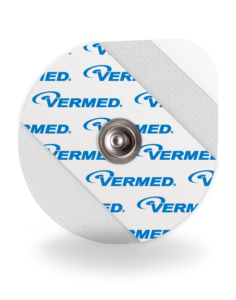What are Hypoallergenic ECG Electrodes?
For those patients with fragile or sensitive skin, sticking any device to their skin can cause irritation. While looking for a gentle ECG electrode, there are many buzz words used. Unfortunately in the case of the word ‘hypoallergenic’ the FDA has no regulation on its meaning.
While “Allergen-Free” and “Hypoallergenic” are enticing terms that are commonly used in marketing, with no regulation they have no real meaning. So let’s dig in to what each of these buzz words can mean.
Allergen-Free Electrodes
Nothing can be truly “allergen-free” since even the most elemental or basic ingredients can technically cause an allergic reaction to somebody. The term is commonly used when common allergens (latex, certain dyes/fragrances, or metals) are avoided. When finding an electrode that is the best for sensitive skin, it is best to find the specific allergens that have been avoided in the production of the gels, tapes, or any other area of concern. 
Hypoallergenic Electrodes
Hypoallergenic is generally used to mean the product causes fewer reactions than other comparable products. Since there is no FDA regulation on the term, it is best to realize this term should be compared against products from the same distributor/producer as opposed to finding “comparable products” from different distributors.
Electrodes for Sensitive Skin
Sensitive and Fragile skin can be broken or irritated easily. Some important factors for product differentiation are adhesive strength and the size of the electrode. Other factors include material of the substrate, as well as the type of gel used.
- Adhesive: A regular grade adhesive will have a more gentle removal than a high-tack adhesive. If the adhesive is noted as ‘diaphoretic’, the electrode may stick better to sweaty skin, denoting a stronger bond to the skin. A high tack, or strong adhesive has the potential to be more irritating on skin. Our Performance Plus electrodes feature our strongest adhesive.
- Size/Shape:Though this is not a major factor of irritability, keeping the electrode size small helps reduce the area subject to irritation.
- Substrate Material: (foam, cloth, tape, vinyl etc.) A breathable material would allow for more movement. Also, a see-through material could reduce the need to move electrodes. Since removal tends to be one of the most irritating points while using electrodes, less repositioning would be helpful.
- Gel: Noting if the electrode uses solid or wet gels is not the only factor to consider. NMT’s Vermed ECG electrodes can go up to 10% chloride content which could result in quicker, more reliable tracing. However, higher chloride content is intended for shorter duration use. Our higher chloride content electrodes are our EMS electrodes where time is of the essence. Some of our VersaTrode and SoftTouch electrodes have lower choride contents making them less irritating to sensitive individuals.
Deciding on the Best Electrode for you
The most important aspect when finding the best electrode for you or your company is knowing the needs of your patients. By considering each of the different components that make up your ECG electrode you can pinpoint which factors are most beneficial to your needs.
For example if you know your patients will be in and out of MRI’s or other screening devices, looking for an electrode that is MR Conditional would be a very high priority. Because these electrodes have carbon snaps they can stay on during scans, reducing the removal and reapplication.
If you are brand new to ordering electrodes we recommend you touch base with one of our team members to discuss the needs you have once we have an understanding of all your needs we will be able to dive into the products that would help you the most.
